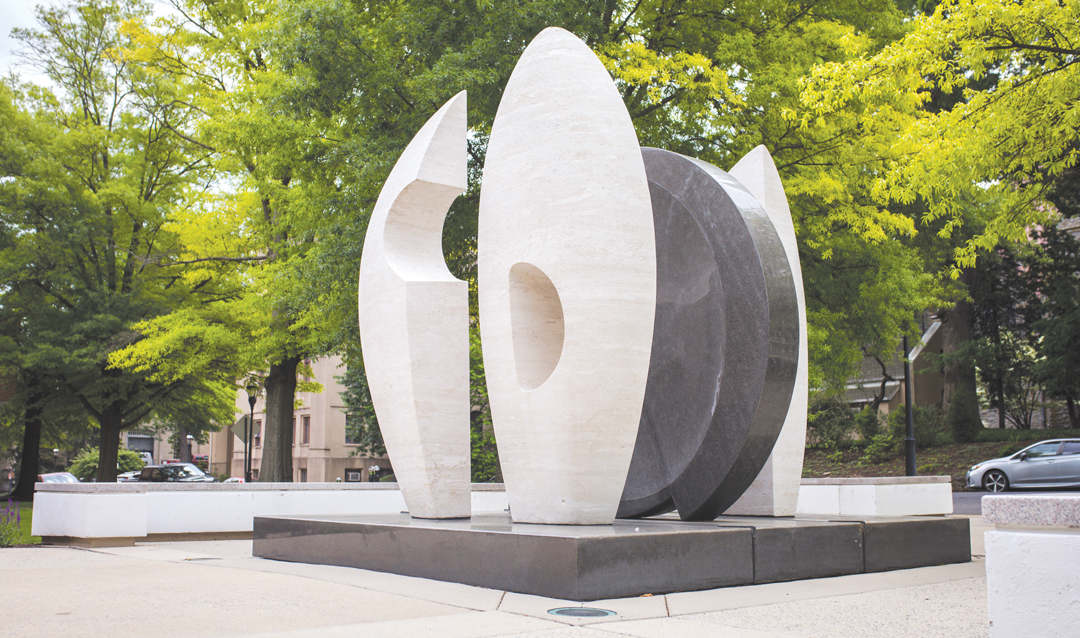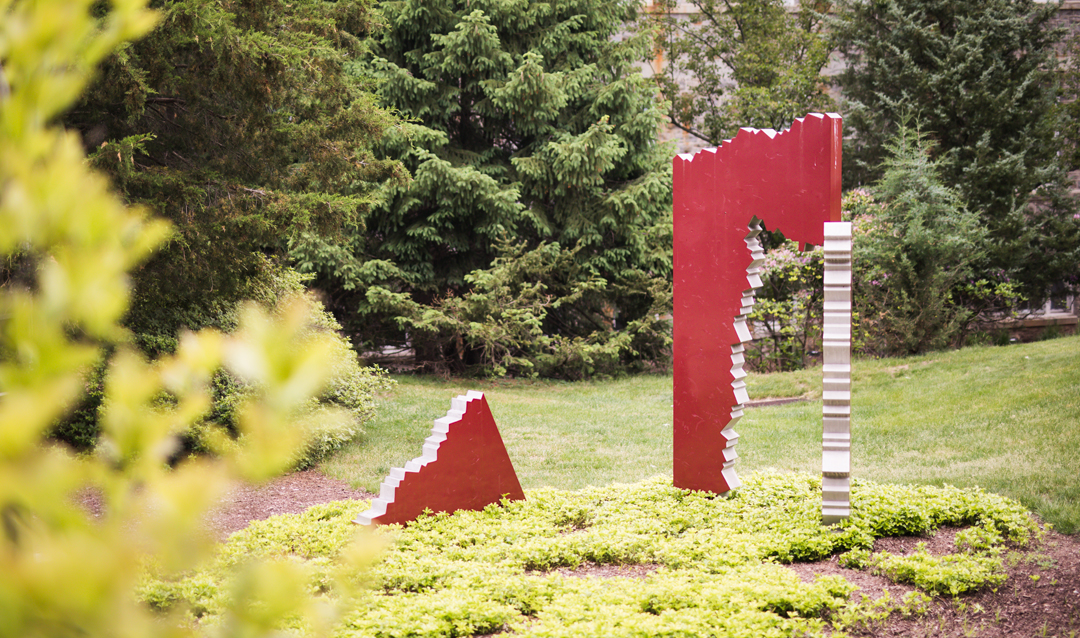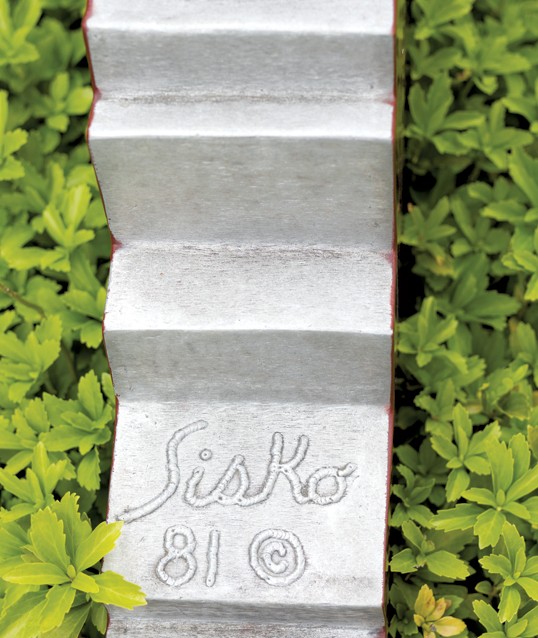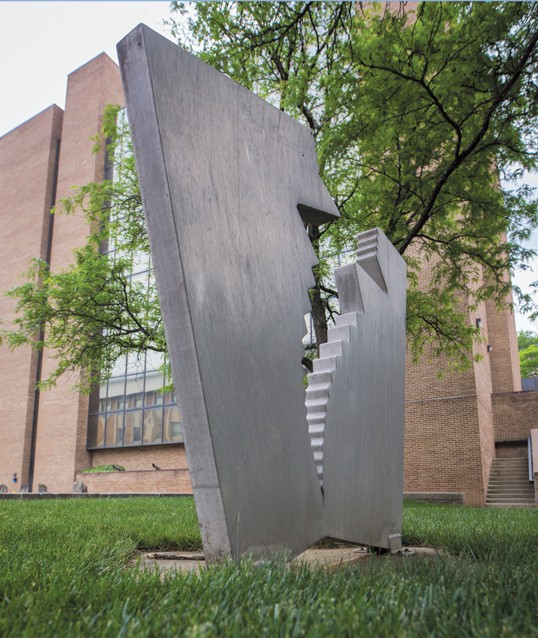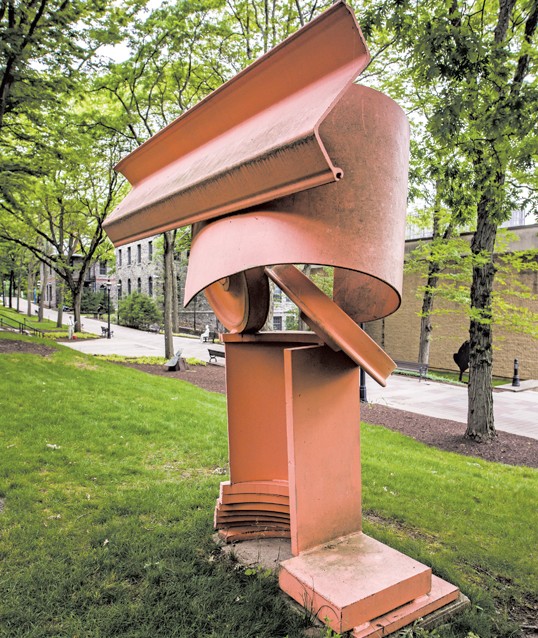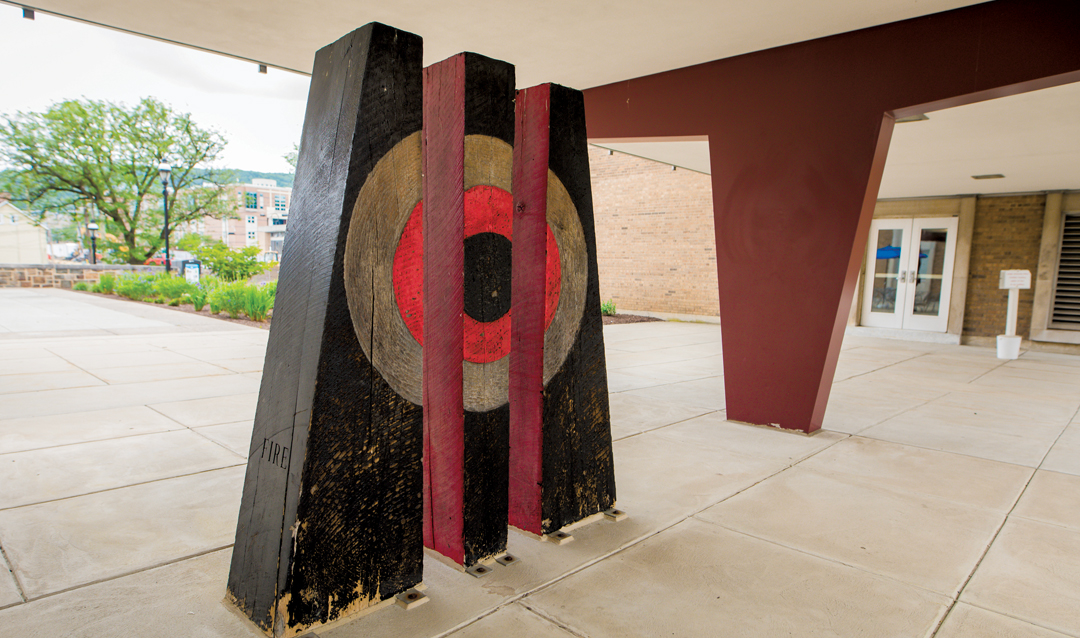Step outside Lehigh’s Alumni Memorial Building and onto Leadership Plaza, and you’re greeted by a bronze statue of Asa Packer with his walking stick and hat. It’s not just a nod to the university’s founder, it’s one of over 50 outdoor sculptures in the collection of the Lehigh University Art Galleries (LUAG) spread across Lehigh’s three campuses.
Packer’s statue, created by Czech Republic native Karel Mikolas, is also one of many that can take visitors on an international artistic journey—even without leaving the Alumni Memorial Walkway.
Along the path, American artist Herbert Simon’s “Pyramid II,” made from aluminum, rises next to Linderman Library. There’s also the stainless steel “Popol” by Guatemalan artist Joyce de Guatemala and two bronze works, “Pavo Real” by Cuban artist Manuel Mendive and “Seated Woman on Rock” by German artist Herb Seiler, among others.
The collection’s sole kinetic piece—“Three Rings,” a steel sculpture by Israeli artist Ephraim Peleg—is among those that can be found on the Mountaintop campus. On the Goodman campus, the bronze “Par What?” by American artist J. Seward Johnson, featuring two men golfing, complements the nearby athletic fields and Mulvihill Golf Learning Center.
“I think the great power of these outdoor sculptures that are so nicely integrated across Lehigh's three campuses is that there really is an opportunity for us to slow down and to look at something carefully, and to notice things that maybe we didn't notice before,” says LUAG Director William Crow.
A lifelong museum-goer who has dedicated his career to art, Crow says he’s sometimes guilty too of not slowing down enough to look at something closely.
“Maybe, as we all return to our physical lives [after the pandemic], it'll be a real chance for people to not only reconnect with art, but to reconnect with themselves, and hopefully others through these experiences,” he says.
Many of the sculptures in LUAG’s outdoor collection were re-sited on campus nearly 20 years ago, in part to make them more visible and accessible to both the campus and local communities. Now, in another step toward making the pieces easier to access and enjoy, the university has added thumbnail images and descriptions of each sculpture on the Asa Packer campus to Lehigh’s interactive campus map.
Mark Wonsidler, curator of exhibitions and collections, noted college campuses with elaborate outdoor sculpture collections are not very common. And the way that works of art are integrated in daily life at Lehigh, he says, provides members of the Lehigh community with an opportunity to immerse themselves in the art.


